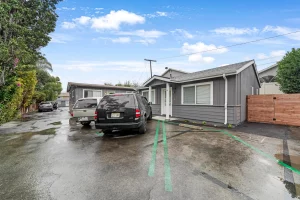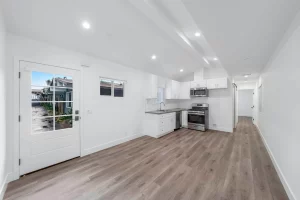
As housing costs continue to rise in many cities around the world, the need for affordable housing options has become more pressing than ever. One solution that has gained traction in recent years is the construction of Accessory Dwelling Units or ADUs. These secondary dwelling units or carriage houses can be built as stand-alone units, but they generally will make use of the water and energy connections of the primary building.
What Is an Accessory Dwelling Unit (ADU)?
ADUs, also known as granny flats or in-law units, are small, self-contained living spaces that are built on the same property as a single-family home. They can take many forms, including converted garages, basement apartments, and even tiny houses.
A beautifully designed ADU with a modern exterior and cozy interior:


Understanding Accessory Dwelling Units (ADUs)
One of the main benefits to build ADUs is that they can provide a relatively low-cost housing option for people who might otherwise struggle to afford to live in a city. They can be particularly useful for people who are looking for a place to live while they save up to buy their own home, as well as for seniors or adults with disabilities who want to live independently but may not be able to afford the cost of a standalone home.
In addition to providing an affordable housing option, ADUs can also help to reduce the strain on the housing market by increasing the overall supply of housing. This can help to ease demand and potentially lower housing costs for everyone.
One of the main challenges of building ADUs is the cost of construction. While they are generally smaller and simpler to build than traditional homes, the cost to build ADU can still be a significant barrier for some people. However, there are a number of ways that communities and governments can help to make ADUs more affordable, such as by providing financial incentives or waiving certain fees.
Another challenge is the issue of zoning and building codes. In some areas, it may be difficult or even illegal to build ADUs due to local zoning regulations. However, more and more cities are starting to relax these regulations in an effort to encourage the construction of ADUs and increase the supply of affordable housing.
Overall, building ADUs can be an effective way to increase the supply of affordable housing and help address the growing need for such options. While there are certainly challenges to be overcome, the potential benefits make it worth considering as a viable solution in communities around the world.
Key Takeaways With ADUs
- ADUs are small, self-contained living spaces that can provide affordable housing options
- They can be particularly useful for people saving up to buy their own home or for seniors or adults with disabilities
- Building ADUs can help to increase the overall supply of housing and potentially lower housing costs for everyone
- The cost of construction and zoning regulations can be challenges to building ADUs
- ADUs (or Accessory Dwelling Units) are a type of small, self-contained housing that can provide an affordable option for people in need of a place to live. Building ADUs can also help to increase the overall supply of housing and potentially lower housing costs for everyone. Challenges to build ADUs include the cost of construction and zoning regulations.
Pros |
Cons |
|
ADUs can provide additional income in the form of rent |
ADUs used for rental purposes will require regular maintenance |
|
They add more space as well as value to the property |
To build ADUs, you may end up paying increased property taxes, and utilities will add to monthly expenses. |
The Bottom Line
In conclusion, building ADUs can be an effective solution for creating affordable housing options in communities around the world. They provide a low-cost housing option for people who may otherwise struggle to afford to live in a city, and can also help to increase the overall supply of housing and potentially lower housing costs for everyone. While there are challenges to be overcome, such as the cost of construction and zoning regulations, the potential benefits make it worth considering a viable solution. As the need for affordable housing continues to grow, the construction of ADUs may play an increasingly important role in addressing this pressing issue.
Learn more about how we can help. Customized solutions for large portfolios!
